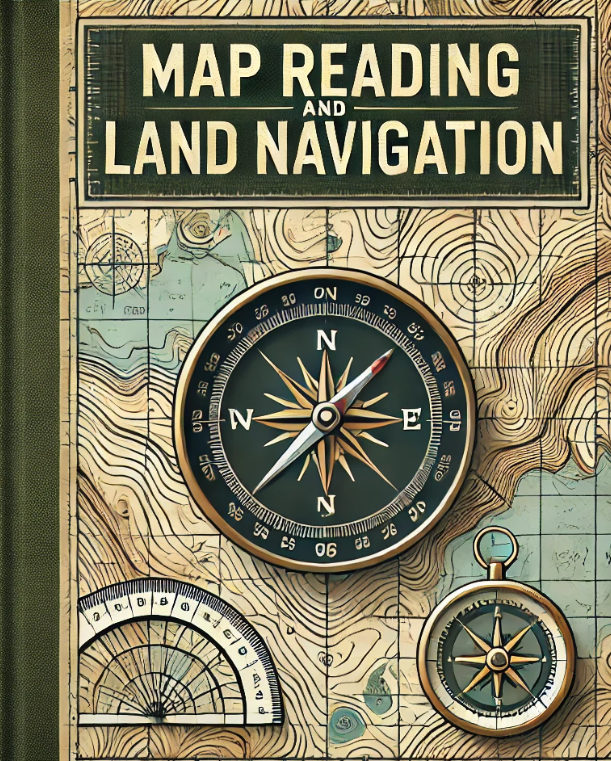PDF Download | 288 Pages | 17 MB
MAP READING AND LAND NAVIGATION
“MAP READING AND LAND NAVIGATION“ is an in-depth, step-by-step guide tailored to equip readers with the essential skills needed for map reading, land navigation, and military operations. This resource is particularly valuable for military personnel, outdoor enthusiasts, and anyone interested in mastering navigation techniques. The book is organized into a series of comprehensive chapters, each covering a critical topic.
Chapter 1: Training Strategy
The opening chapter introduces the Building-Block Approach, a systematic method to master land navigation. It outlines the Armywide Implementation plan and emphasizes Safety during map-reading exercises and fieldwork.
Chapter 2: Maps

This chapter explains the Definition and Purpose of maps, covering Procurement, Security, Care, and the various Categories of maps. It also introduces Military Map Substitutes and Standards of Accuracy needed for operational use.
Chapter 3: Marginal Information and Symbols
Readers will learn about the Marginal Information on military maps, such as legends and scales, alongside the use of Topographic and Military Symbols to understand terrain and tactical features. The chapter also explains the significance of Colors Used on a Military Map to represent various terrain features.
Chapter 4: Grids
This chapter introduces readers to map grids, starting with the Reference System and Geographic Coordinates, followed by an in-depth discussion of Military Grids and the United States Army Military Grid Reference System. It covers techniques for Locating a Point using grid coordinates and the Protection of Map Coordinates and Locations, ensuring accurate and secure use of grid systems.
Chapter 5: Scale and Distance
Understanding map Scale is crucial, and this chapter explains the concept using Representative Fractions and Graphic (Bar) Scales. It also explores alternative methods of calculating distances on a map.
Chapter 6: Direction
This chapter introduces different Methods of Expressing Direction, including the use of Azimuths, Base Lines, and Grid Azimuths. The use of a Protractor, Declination Diagrams, and techniques like Intersection, Resection, and Polar Plot are also discussed for precise directional navigation.
Chapter 7: Overlays
This chapter covers the purpose of Overlays, particularly Map Overlays and Aerial Photograph Overlays, which are crucial tools for military operations, providing an additional layer of information on maps.
Chapter 8: Aerial Photographs
In this chapter, readers will explore how Aerial Photographs compare to maps, learn about the various Types of Aerial Photographs and film, and understand the processes for Scale Determination, Indexing, and Orientation of photographs for navigation and reconnaissance.
“MAP READING AND LAND NAVIGATION” is a vital tool for anyone aiming to gain mastery in navigation and map reading, offering practical insights and techniques essential for field operations and outdoor exploration.




